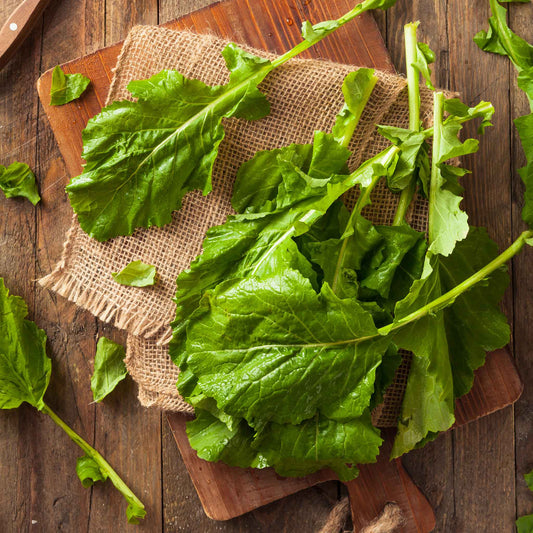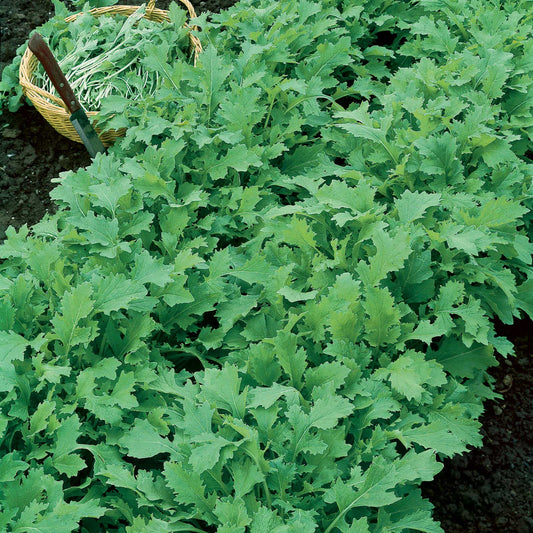-
main-collection-product-grid

Turnip Seeds - Purple Top White Globe
Tender roots are mild while its young leaves are nutritiousSaleTurnip Seeds - Purple Top White Globe
Tender roots are mild while its young leaves are nutritiousRegular price As Low As $4.99Regular priceUnit price per$52.99Sale price As Low As $4.99Sale -
main-collection-product-grid

Turnip Seeds (Organic) - Purple Top White Globe
Delightful and mildly sweetTurnip Seeds (Organic) - Purple Top White Globe
Delightful and mildly sweetRegular price As Low As $6.99Regular priceUnit price per -
main-collection-product-grid

Turnip Seeds - Shogoin
Crisp, firm and fast growing Japanese varietyTurnip Seeds - Shogoin
Crisp, firm and fast growing Japanese varietyRegular price As Low As $4.99Regular priceUnit price per -
main-collection-product-grid

Turnip Seeds - Seven Top
Nutritious and flavorful turnip greensTurnip Seeds - Seven Top
Nutritious and flavorful turnip greensRegular price As Low As $4.99Regular priceUnit price per -
main-collection-product-grid

Turnip Seeds - Golden Ball
Sweet, symmetrical and pepperySaleTurnip Seeds - Golden Ball
Sweet, symmetrical and pepperyRegular price As Low As $4.99Regular priceUnit price per$16.99Sale price As Low As $4.99Sale -
main-collection-product-grid

Turnip Seeds - White Egg
Great keeper, flavor intensifies after storageTurnip Seeds - White Egg
Great keeper, flavor intensifies after storageRegular price As Low As $4.99Regular priceUnit price per -
main-collection-product-grid

Turnip Seeds (Organic) - Seven Top
Grown for its delectable and healthy greensTurnip Seeds (Organic) - Seven Top
Grown for its delectable and healthy greensRegular price $6.99Regular priceUnit price per
Planting the best turnip seeds
- 7 turnip seed varieties
- Great for container gardens
- A mouth watering cool-season vegetable
- Offer lush and delicious leaves in addition to their more common edible root
Curious Facts about the Turnip Vegetable
Two things you likely didn't know about the turnip: It's a member of the mustard family, and before pumpkins were introduced to Europe, turnips were the original Jack O'Lantern.
By the era of the Roman empire, the turnip was already a domesticated and widely grown food crop, and it continued to be a staple food for the lower classes until well into the 16th century. Some might turn their noses up at such a history. Despite its age, the turnip has always been a rather humble food. But those who refuse to try it for that reason are missing out on a vegetable well worth eating, and well worth growing.
The Best time to Plant Turnip Seeds
Because they grow so quickly, turnips can be planted in both spring and fall, maturing before the heat of summer would cause the plants to bolt. In spring, direct sow seeds two to three weeks before the last frost, and plant the autumn crop in late summer after corn and beans have passed their peak. Water turnip seeds regularly.
Greens are ready to eat within a month of planting, and the root itself only needs another month or two before it's ready. Harvest when the root is two inches in diameter for salads, slightly bigger at three to four inches for cooking. Any bigger than this and it will become bitter and woody. Time it right with your frosts, as the roots will become sweeter if exposed to a light chill. In spring, always pull turnips before temperatures reach 80°F or higher, or the greens will bolt. Like beets and potatoes, turnips can be stored in a cool, dry place for winter food supply. Turnips are a fantastic source of fiber, as well as calcium and vitamin B6 (important for brain and nervous system function).
Numerous companion plants for turnips
Turnips make an excellent companion plant for all kinds of other garden vegetables. Plant near beans, peas, and members of the brassicaceae family. To keep pests away from tender turnip greens, try planting near chives, herbs such as thyme and borage, or with hyssop seeds.
For a particularly tasty turnip-based treat, try cooking up with other root vegetables like carrots and potatoes in an old-fashioned pasty.
To learn more about planting, growing, and caring for turnip seed, see our Turnip Seeds Planting Guide.






